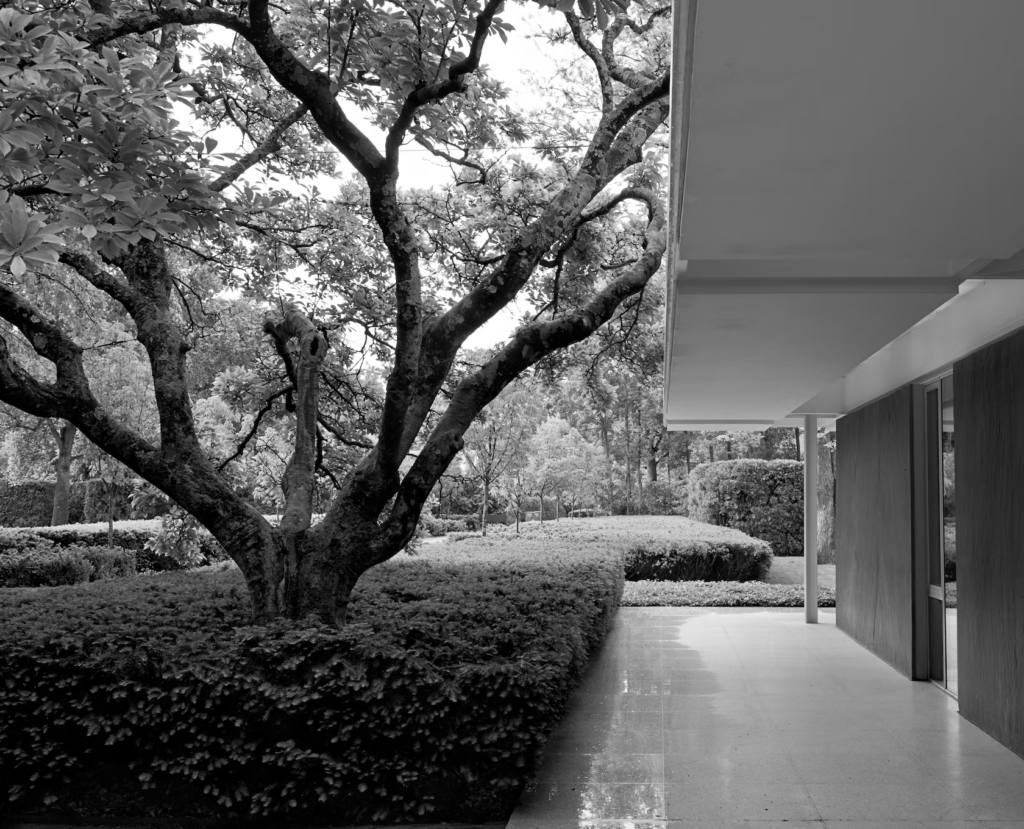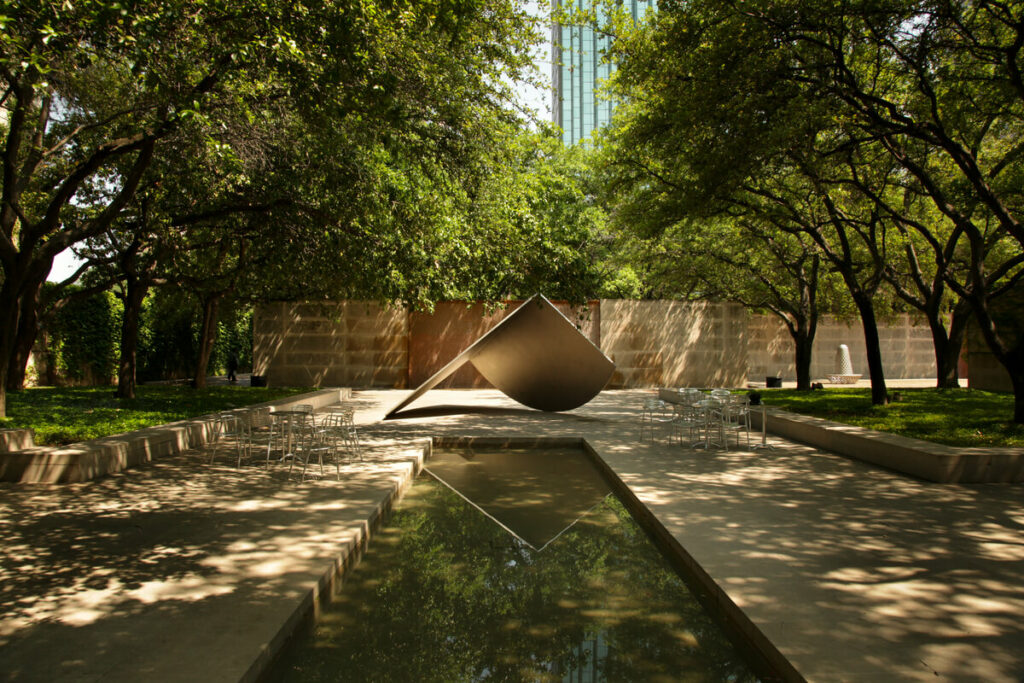Header photo credit: Alan Ward
Starting on 18th January 2024, The Landscape Architecture of Dan Kiley, a traveling photographic exhibition that honors one of the most important Modernist landscape architects, will take place until 30th April 2024. The exhibition is on view at The Exhibition Space (189 Banker Street Brooklyn, N.Y. 11222).
The exhibition is organized and curated by The Cultural Landscape Foundation (TCLF) and ABC Stone. Moreover, it is free and open by appointment from Monday to Friday between 9:00 AM – 4:00 PM ET.

Dan Kiley (1912-2004) is a landscape architect who significantly contributed to the world of design. He worked with influential architects such as Louis Kahn, I.M. Pei, and Eero Saarinen. To this day his design legacy is substantial and influential. This exhibition is meant to honor Kiley and his legacy while calling attention to the need for informed and effective stewardship of his work. Dan Kiley worked on many significant projects but the design of Columbus, Ïndiana’s Miller House and Garden is among his most well-known and iconic creations. This 1957 project, which was completed, is frequently regarded as “a masterwork of modernist landscape architecture.”

“Dan Kiley was always about the grid. Inspired by the spatial geometries found in Andre Le Nôtre’s French gardens, in 1990, Kiley stated, “Most people are not excited about the dimensions of space… What they do and how they affect; when you pick trees and place them so many feet in the center, this is very important, whether they’re ten feet, twelve feet, fifteen feet, or eighteen feet in the center. Just like the windows in the Palazzo Farnese. Those things are what make it wonderful or not, the spatial proportion.” Therefore, maintaining the grid is key, but sadly, deferred maintenance for a work of landscape architecture is less forgiving than for building architecture,” says Charles Birnbaum, exhibition co-curator.
In Kiley’s elegant works, one can find hedges, allees, and other figures made into unconventional new places. They connect to nature and people and the most Romantic sense but with a refined and resolved Modernist approach.

An opening reception was held on 18th January which included a “Kiley Conversation” between the exhibition’s co-curator, Charles A. Birnbaum, TCLF’s President and CEO, and landscape architect Raymond Jungles, founder and principal of Raymon Jungles, Inc. This event was free, but all attendees were required to register and it was suggested that they make a small donation.
A smaller version of this exhibition was hosted by the New York Center for Architecture in spring 2015 and received glowing reviews from the Wall Street Journal. However, the current version of the exhibition is twice the size. it also includes videography with Kiley’s partner Joe Karr, who originally worked with Kiley on the Ford Foundation Atrium, and photography of the Atrium post-rehabilitation.
Since the exhibition was first shown in late 2013 at the Boston Architectural College, it has been on view at more than twenty museums, cultural institutions, and architecture centers. During that period we have seen a greater appreciation for Kiley’s design legacy. When it comes to managing change at significant Kiley projects, the best examples include Michael van Valkenburgh’s surgical transformation of the St. Louis Arch landscape, which has spatially absorbed a 47,000 square-foot visitor center and made the national park more porous, and Raymond Jungles’ inspired renewal of the Ford Foundation Atrium in New York City
Charles birnbaum
The photos in the exhibition, by photographers Marion Benner, Todd Eberle, and Alan Ward, among others, document the state of 27 of Kiley’s more than 1000 designs. The exhibition is meant to spark discussion about responsible stewardship, central to TCLF’s mission. What the exhibition cannot illustrate are Kiley designs that have been lost or severely altered, such as Lincoln Center in New York, N.Y., and Dulles Airport, outside Washington, D.C.
“Our hope is that the exhibition and its related programming will inspire the next generations of design professionals to safeguard Kiley’s seminal works, as well as lift the veil on others who played significant roles in the Kiley’s office. It is also our hope that the exhibition will inspire the public, academics, and design and historic preservation professionals to advance future scholarship, state and national historic designations, and placing a value on Kiley’s significant design legacy when managing change,” concludes Birnbaum.










